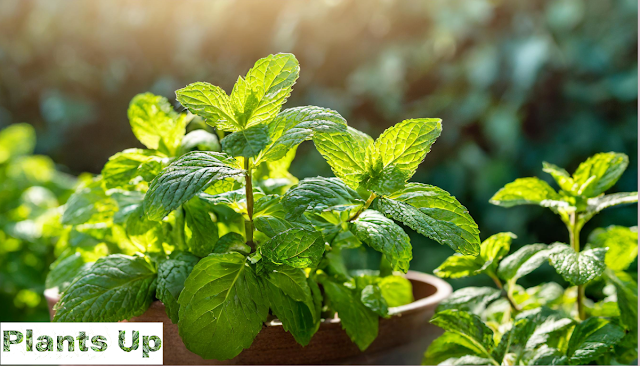 |
| Snake Plant (Sansevieria Trifasciata) |
The Snake Plant, also known as the Mother-in-Law's Tongue, is a popular houseplant known for its striking appearance and ability to thrive in a variety of conditions.
One of the reasons Snake Plants are so popular is that they are very low maintenance and
can tolerate a wide range of conditions. They prefer bright, indirect light but can also tolerate low light, and can go for long periods without water.In addition to their air-purifying benefits, Snake Plants are also known for their striking appearance, with their tall, upright leaves that come in a range of colors and patterns. They are also a great choice for those who are new to indoor gardening, as they are very forgiving of neglect and can bounce back quickly with proper care.
Overall, Snake Plants are an excellent choice for anyone looking for a low-maintenance, attractive, and air-purifying houseplant.
Botanical name: Sansevieria Trifasciata
Nickname: Snake Plant, Mother-in-Law's Tongue
Plant type: Evergreen perennial
Air purifying: Yes, Snake Plants are known to help remove pollutants from the air, such as formaldehyde and benzene.
Plant height (including pot): Snake Plants can grow up to 4 feet tall, but smaller varieties are also available.
Pet/baby safe: Snake Plants are non-toxic, making them safe for pets and babies.
Advantages of Snake Plant
The Snake Plant has a number of benefits and why we should have this in our home, both for your health and your home:
Air Purification: Snake Plants are known to help remove pollutants from the air, such as formaldehyde, benzene, and trichloroethylene.
Low Maintenance: Snake Plants are very low maintenance and can tolerate a wide range of conditions, making them a great choice for those who are new to indoor gardening.
Improves Sleep Quality: Snake Plants release oxygen at night, which can help improve the quality of your sleep.
Increases Humidity: Snake Plants release moisture into the air through a process called transpiration, which can help increase the humidity in your home, especially during the dry winter months.
Reduces Stress: Snake Plants have a calming effect and can help reduce stress levels.
Pet-Friendly: Snake Plants are non-toxic, making them safe for pets.
Decorative: Snake Plants have a striking appearance, with their tall, upright leaves that come in a range of colors and patterns, making them a great choice for adding some green to your home.
Durable: Snake Plants are tough and can withstand neglect, making them a great choice for those who may not have a green thumb.
Space-Saving: Snake Plants are great for small spaces because they can grow vertically, taking up very little floor space.
In conclusion, Snake Plants are a versatile and beneficial plant that can provide a range of benefits for your home and health.
Disadvantages of Snake Plant
Slow Growth: Snake Plants grow slowly, so they may not be the best choice for those looking for fast-growing plants.
Toxicity: Although Snake Plants are non-toxic to humans and pets, they can cause skin irritation if the sap gets on the skin. Additionally, the sap can cause digestive problems if ingested.
Prone to Pests: Snake Plants can be prone to pests, such as spider mites, mealybugs, and scale insects.
Requires Well-Draining Soil: Snake Plants do not like to be in soggy soil, so it's important to make sure the soil is well-draining. If the soil stays too wet for too long, the plant's roots can rot.
Needs Bright Light: While Snake Plants can tolerate low light, they prefer bright, indirect light. If they do not receive enough light, their growth may slow and the leaves may become dull and discolored.
In conclusion, while Snake Plants are generally easy to care for, there are a few disadvantages to consider, such as slow growth, potential toxicity, pest susceptibility, and a preference for well-draining soil and bright light.
There are many other interesting facts and information about Snake Plants that can be highlighted:
Origin: Snake Plants are native to West Africa and are widely cultivated in many tropical countries.
Scientific Name: The scientific name of the Snake Plant is Sansevieria Trifasciata.
Common Names: Snake Plants are also known as Mother-in-Law's Tongue, Bowstring Hemp, and Devil's Tongue.
Drought Tolerance: Snake Plants are highly drought tolerant, making them an excellent choice for those who may forget to water their plants.
Propagation: Snake Plants can be easily propagated by dividing the offsets or by using leaf cuttings.
Adaptability: Snake Plants can adapt to a wide range of temperatures and light conditions, making them a great choice for those who want to grow plants indoors or outdoors.
Uses: Snake Plants have many uses, including as an indoor ornamental plant, as a ground cover in landscaping, and as a natural air purifier.
Folklore: Snake Plants have been used for centuries in traditional medicine and have been associated with good luck and prosperity in many cultures.
Popular Culture: Snake Plants have become increasingly popular in recent years due to their ease of care and striking appearance. They have been featured in many popular home design and gardening magazines, as well as on social media platforms.
In conclusion, Snake Plants are fascinating plants with a rich history and cultural significance. Their adaptability, low maintenance, and air purifying capabilities make them a great choice for adding some green to your home.
Propagation of Snake Plant
How to Repot Snake Plant?
 |
| Snake Plant Repotting |
Do comment us if you like this blog and also don't forget to subscribe my channel for more related videos.
Click here to checkout Snake Plant Repotting Blog and Video
Click here to checkout Snake Plant Water Propagation Video
Click here to checkout How to Grow Snake Plant Video
Click here to checkout How to Grow Sansevieria Trifasciata Video
Thanks for visiting Plants Up!
